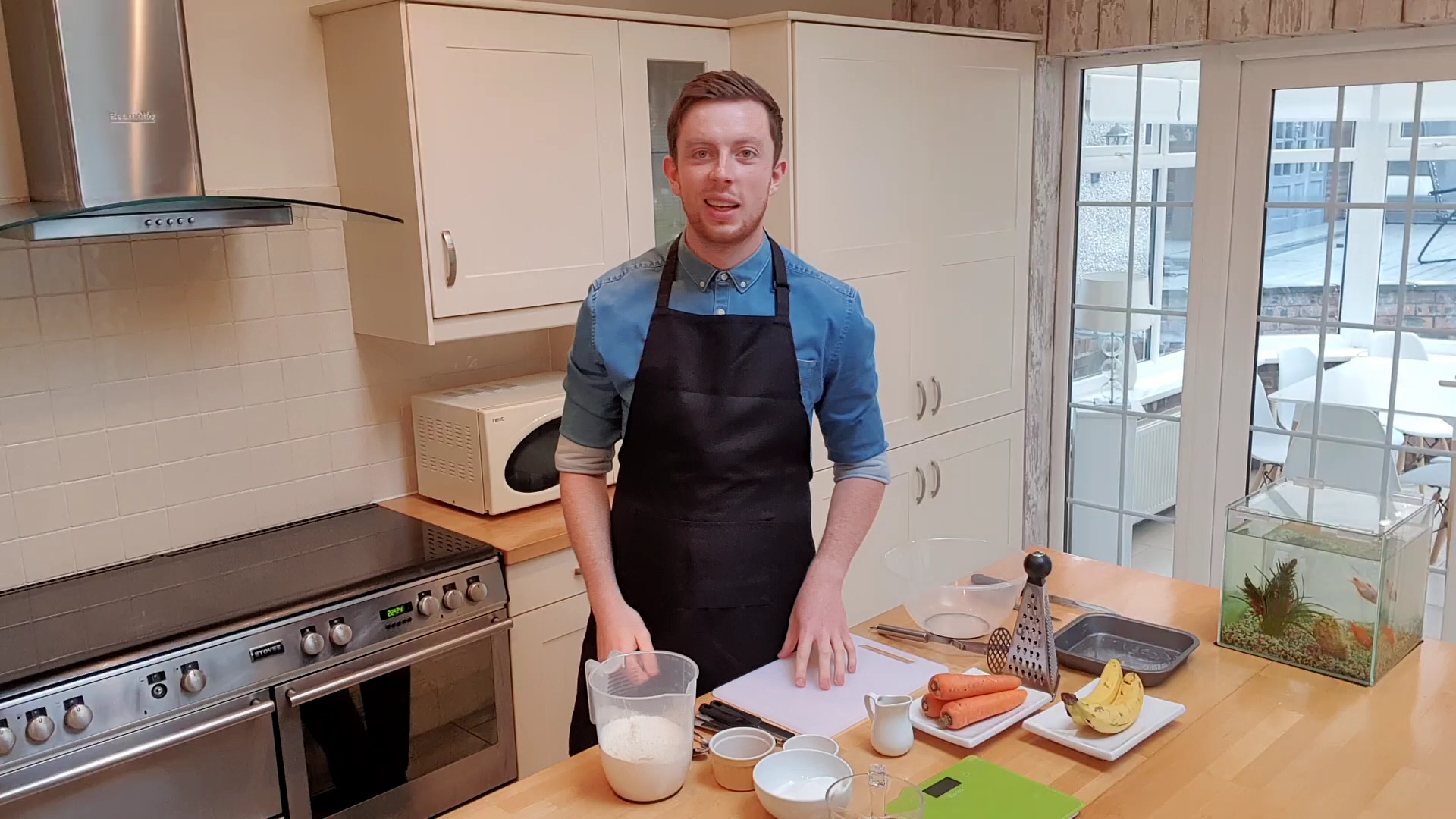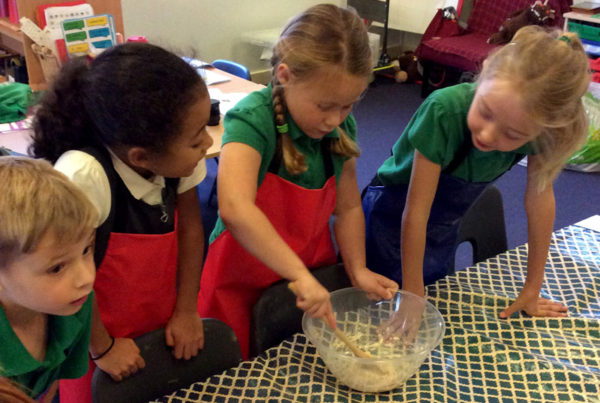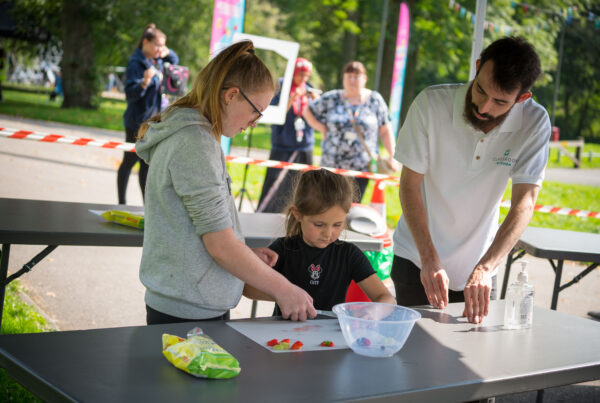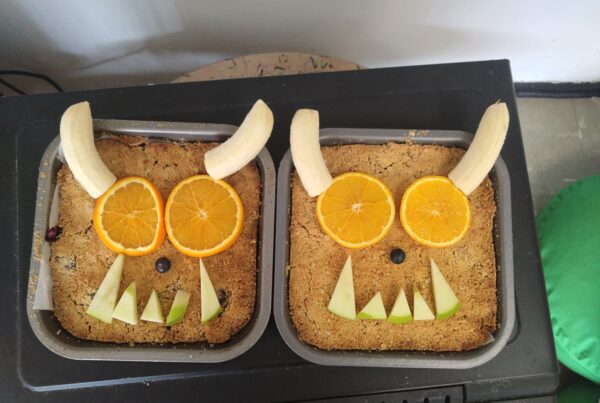Is your primary school looking to get cooking and learning about nutrition? Do you already have a cooking and nutrition curriculum in place but it’s slightly outdated? Have you just been made Design Technology Leader or PSHE Co-ordinator?
If you’ve answered YES to any of the above, then this is a guide for you…
Primary School Cooking and Nutrition
Cooking and Nutrition has been on the Primary National Curriculum since 2014 under the heading of Design Technology. Regardless of this, we also know that nutrition and healthy eating fall under a series of subjects such as PSHE, Science and PE. As well as, if your school is applying for any awards such as the Healthy Schools Award or School Wellbeing Award, then cooking and nutritional learning also have to be evident in these too. Even more so, as teachers we want our pupils to know how to live a healthy lifestyle whether it’s a necessity to deliver or not.
Considering all of this, Cooking & Nutrition (#educooking), is a pretty important subject so it’s valuable to have a great curriculum.
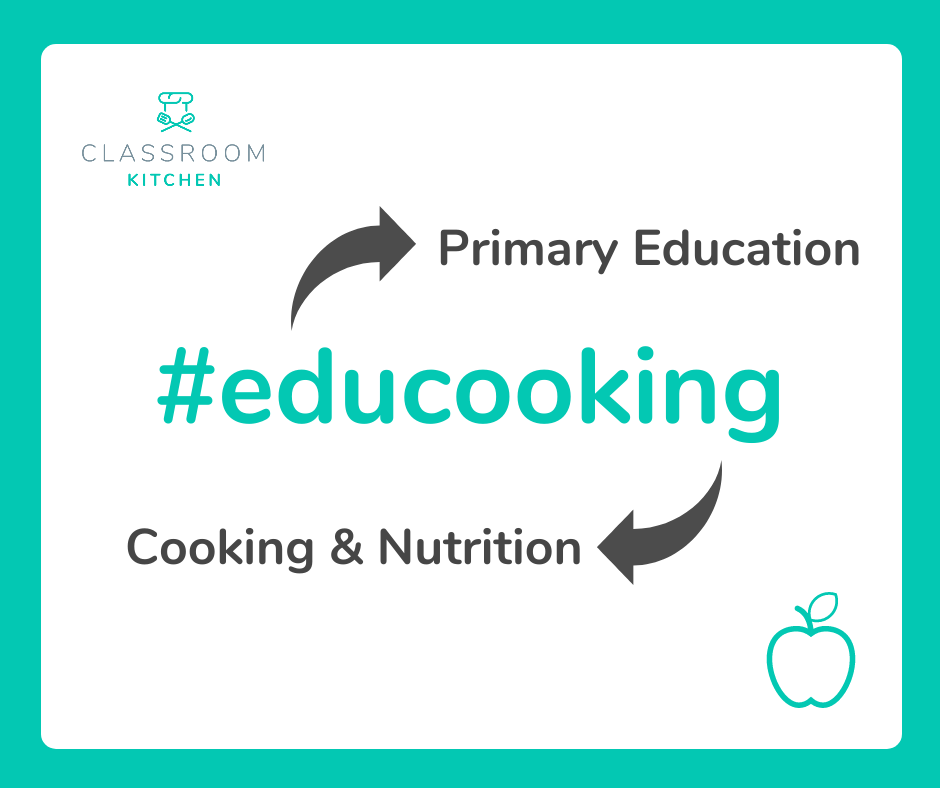
Building your Primary School Cooking and Nutrition Curriculum
The following guide is here to give you a basic overview of building your own primary school cooking and nutrition (#educooking) curriculum. Through the next steps, we’ll discuss:
- Deciding the main aim
- Finding strong foundations
- KS1 cookery lessons
- KS2 cookery lessons
- EYFS cookery lessons
- Implementing and reviewing your cooking curriculum
Prior to starting Classroom Kitchen, I was a primary teacher and DT coordinator. Being my first ‘subject leaders’ role, I wasn’t 100% sure where to start. At the time, DT had been untouched in our school for a little while so although it left me with a blank canvas, it also left me with very little to model my curriculum on. With a lot of trial and error, research and advice from colleagues, I put together a ‘skills-based’ curriculum. We got equipment in place and some new resources and off we went. Looking back, it was a ‘half-decent’ start. When I left teaching to start CK, I jumped straight in with the ‘good-bits’, laid out the skills, matched up some recipes and over the last 3 years, I’ve developed it into the curriculum it is today.
The purpose of me telling you this… So that you understand that the next set of steps, tips and tricks have been built after 5 years of trial and error, evaluations, improvements and lots of research. Use this guide, get in touch if need be and skip the 5 years of having to work it all out for yourself!

Step 1:
Deciding your main aim
What do you want your school’s pupils to know when they leave in Year 6? Which skills do you want them to have? What do you want them to be able to do?
This is the big decision. The curriculum aim.
It could be simple things such as, we:
- want all pupils to leave our school knowing __ recipes confidently.
- aim to teach pupils the __ key skills of cooking.
- want Year 6 pupils to be able to explain the factors of a healthy diet.
There will be many ‘sub’ aims (wishes) but stick to your main aim first. The bottom line in what you want pupils to takeaway.
Cooking curriculum + school ethos…
When you decide your main aim, think what that looks like in your school. This is creating the ‘ethos’ of your curriculum. For example, you may wish for them to leave with ’12 recipes’ but what do those recipes look like. Are they budget recipes? Simple or complex? For their immediate lives or future lives? You’ll understand that every school is different with different needs and so it is important that your curriculum aim, works to the needs of your pupils in order to be successful.
Our Classroom Kitchen Online curriculum features a mix of recipes and skills so that it is adaptable to the wider audience. I know many users who use our curriculum but re-shape it to their needs. For instance, they add in local recipes and take out a few of ours. Also, they re-jig the order to fit with their school events as well as even simple things like changing ingredients so they can use their own ‘homegrown’ veggies.
If you’re building yours from scratch and not using a template curriculum such as ours, then make sure to think of things like this from the start so you can tie these into the ‘ethos’ of your aim. Add your school’s personality to the final product.

Step 2:
Finding your foundations
Find out what you’ve already got. If you’ve nothing hard-copy/official in place then, then it’s time to have an ask around school. Discover what teachers already do. You may find biscuits being made at Christmas and Fruit Skewers in the Summer. There may be nutrition lessons already in your Science curriculum. Do a bit of digging and make a nice long list.
If you’ve already got a cooking and nutrition curriculum in place, how much of it is happening? Are there any extras going on?
Then for the fun bit: stick or twist!
Piecing together the curriculum jigsaw…
Having decided the main aim of your #educooking curriculum, you need to decide what fits and what doesn’t. It may be that you leave things in place until you’ve built the new curriculum but have in mind what’s carrying across and what’s going in the bin. This is going to help you find gaps for which you can later fill with new, fresh ideas.
You really need to be strong with your main aim, if something doesn’t fit, like biscuit making at Christmas, then you need to put a stop. I would suggest having a replacement activity in mind. For example, if biscuits at Christmas are being taken out due to them being a ‘sweet treat’, then what will you replace them with. Don’t be a Grinch!
Sweet treats might not be an issue in your curriculum but too-much baking may be. Play with your ideas and find the right balance.
Once you’ve slotted in the old, look at the gaps and the balance in your foundations. You may want every year group cooking three times a year, if so, who needs more, who needs less? It may be that you want a skill-based curriculum and you may realise one age group is doing a lot of baking and not much cutting, swap some lessons around or add in some new recipes.
Breaking it down…
Considering your main aim (being the end of Year 6), is each year group making enough progress towards it? It’s a good idea to work back from the main aim and ensure that every year group takes one step closer to it when planning.
Map your curriculum for the whole school. Make it clear what skills are taught each year, what recipes and what they should be learning in ‘nutrition’ too. You need to also think of frequency and quantity of sessions. Less but more detail (and effort) can be better than cooking 6 times a year. Although cookery is something that requires practice so you may opt for more but shorter sessions.
This will give you strong foundations for your #educooking curriculum.

Step 3:
KS1 Cookery Lessons
Once the foundations and main aim of your curriculum have been decided, you can start to break it down into age groups.
I’ve done 3 steps here for KS1, KS2 and EYFS because the National Curriculum breaks them down this way. It’s important to remember that each age band has different goals and targets. Link these into your school’s main aim. You can see the KS1 aims in the image shown here:
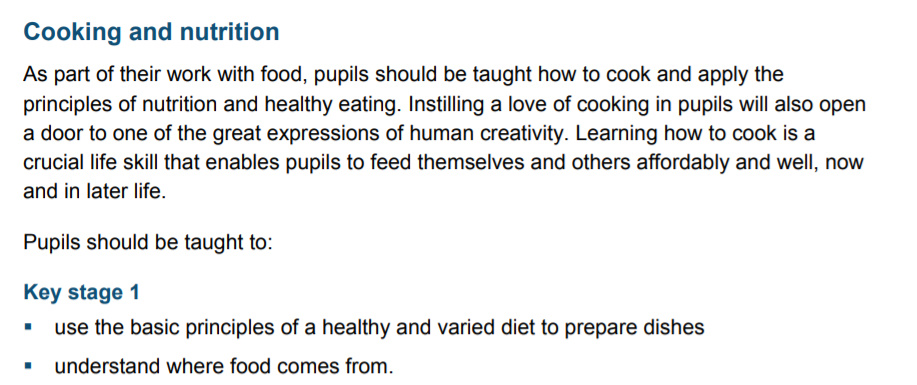
How should #educooking look in KS1?
This is completely up to you!
I like to have sessions running the same from Year 1 through to Year 6 so they get used to how they work. In our sessions, the whole class cooks at the same time in small groups of 6. Routine is the same throughout to help manage behaviour and expectations. The changing factor is the skills, equipment and the recipes.
It’s important, especially in a skill based curriculum, to think what equipment is safe for 5-7 year olds to use. My advice is avoid graters and peelers (these are surprisingly dangerous) and focus on knife skills. It may be they simply use a dinner knife until they get used to the bridge and claw method.
This may then obviously influence your choice of recipes.
Don’t feel you have to do whole class sessions either. They’re great for saving time but do pose more stress for an unfamiliar teacher (who isn’t used to teaching cookery). It could be that in KS1, they break their sessions down into smaller groups with all groups cooking over a week.
In terms of nutrition, you may teach a lot of it separately at KS1, simply to help pupils focus on one element at a time. Obviously, if you’re showing pupils how to make a fruit salad, it’s also a great opportunity to discuss the benefits of fruit and vegetables.
You may decide more #educooking lessons happen in KS1 than KS2 too, or vice versa.
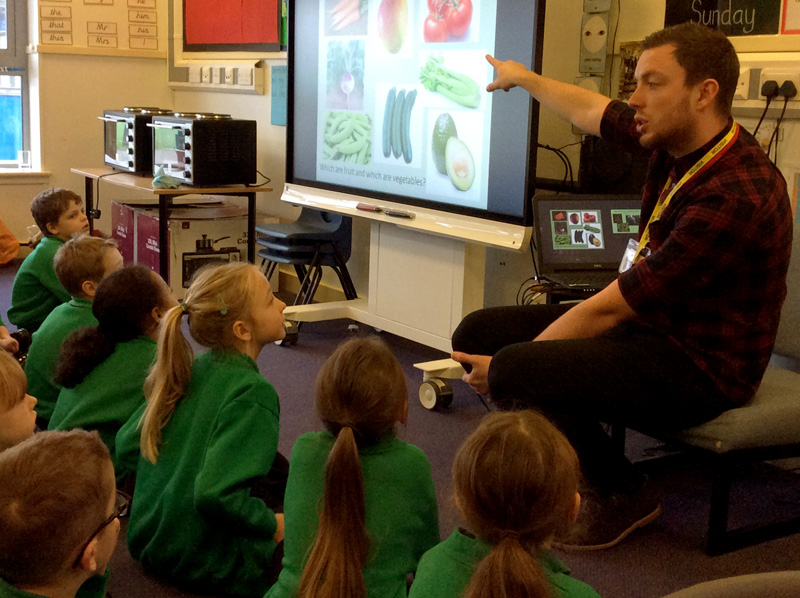
Step 4:
KS2 Cookery Lessons
Your cookery lessons in KS2 will definitely have to ‘ramp’ up towards the final aim. With hopefully the fundamentals being achieved in KS1, you can now start to test, push and access more skills in KS2. I would definitely recommend introducing sharps, peelers and graters in at Year 3 and 4 too.
In terms of Nutrition, build on the work around a balanced diet and definitely start to teach elements alongside the cooking, linking in questions to the ingredients being used in recipes. Also look at wider nutrition ‘topics’, such as alternative diets etc.
You can see the National Curriculum KS2 aims in the image shown here:

Should I expect more of KS2 when designing our curriculum?
This completely depends on what your KS2 classes have done previously.
Cooking is a life skill that requires learning and practice to develop. If your KS2 pupils haven’t done much cooking or baking previously then it may be worth considering this in the first couple of years using your new curriculum. You may have to start pupils on easier recipes or at least give them more assistance. My recommendation would be to keep the planned/desired recipes but lower your initial expectation in terms of ability. It may mean that the teacher has to do some of the tasks and have groups focus simply on one objective per lesson (i.e. practising the bridge method).
With experience, push the expectations, give them more independence and offer them more choice with recipes. For example, get them to choose 2 or 3 vegetables from a choice of 5 and prepare them without guidance.

Step 5:
EYFS Cookery Lessons
An optional consideration to your whole school curriculum. It’s something we’ve just added here at Classroom Kitchen to ours (click here for more details). Even though there isn’t a specific ‘this must happen’ for cooking at Nursery and Reception, it certainly has its benefits! We found so many links to the Early Learning Goals that we felt it certainly worthwhile to put a scheme of work together for.
Below you can see an example of just 2 areas you could dig into:
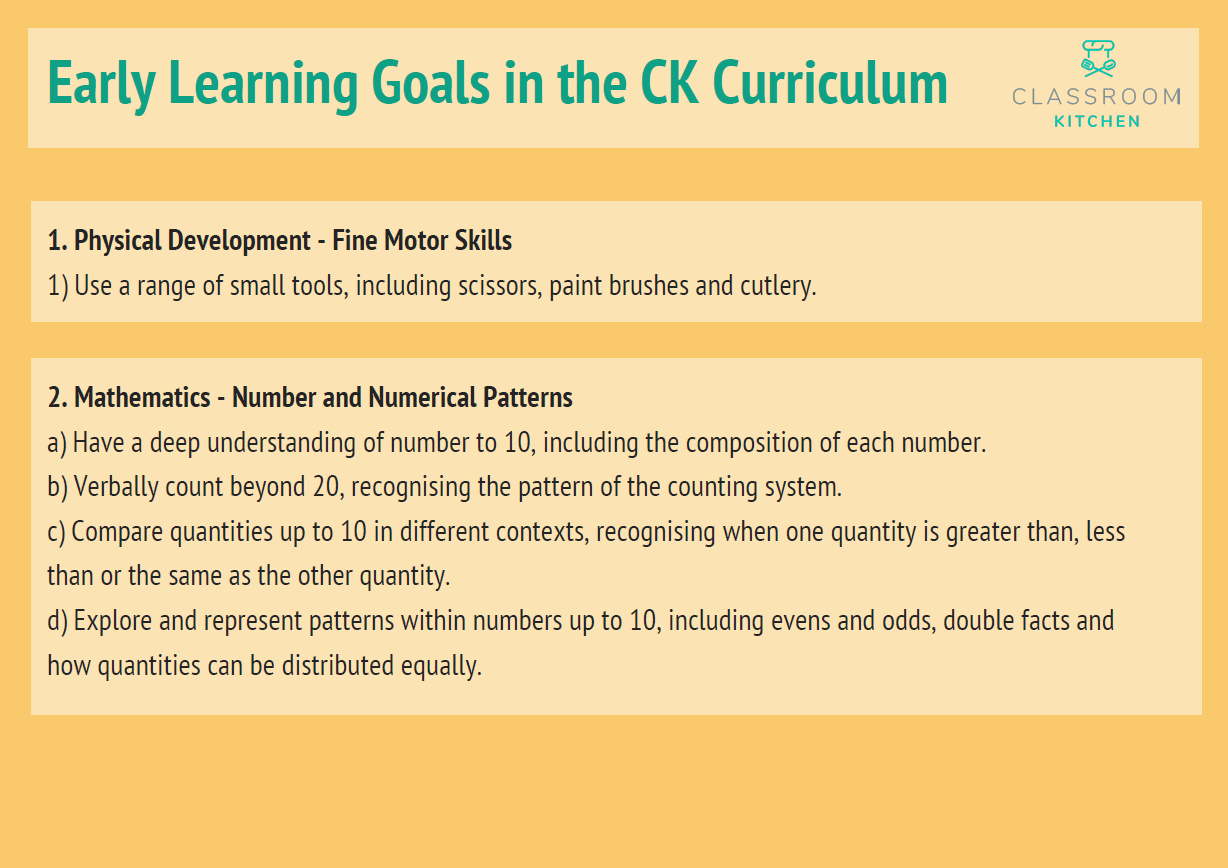
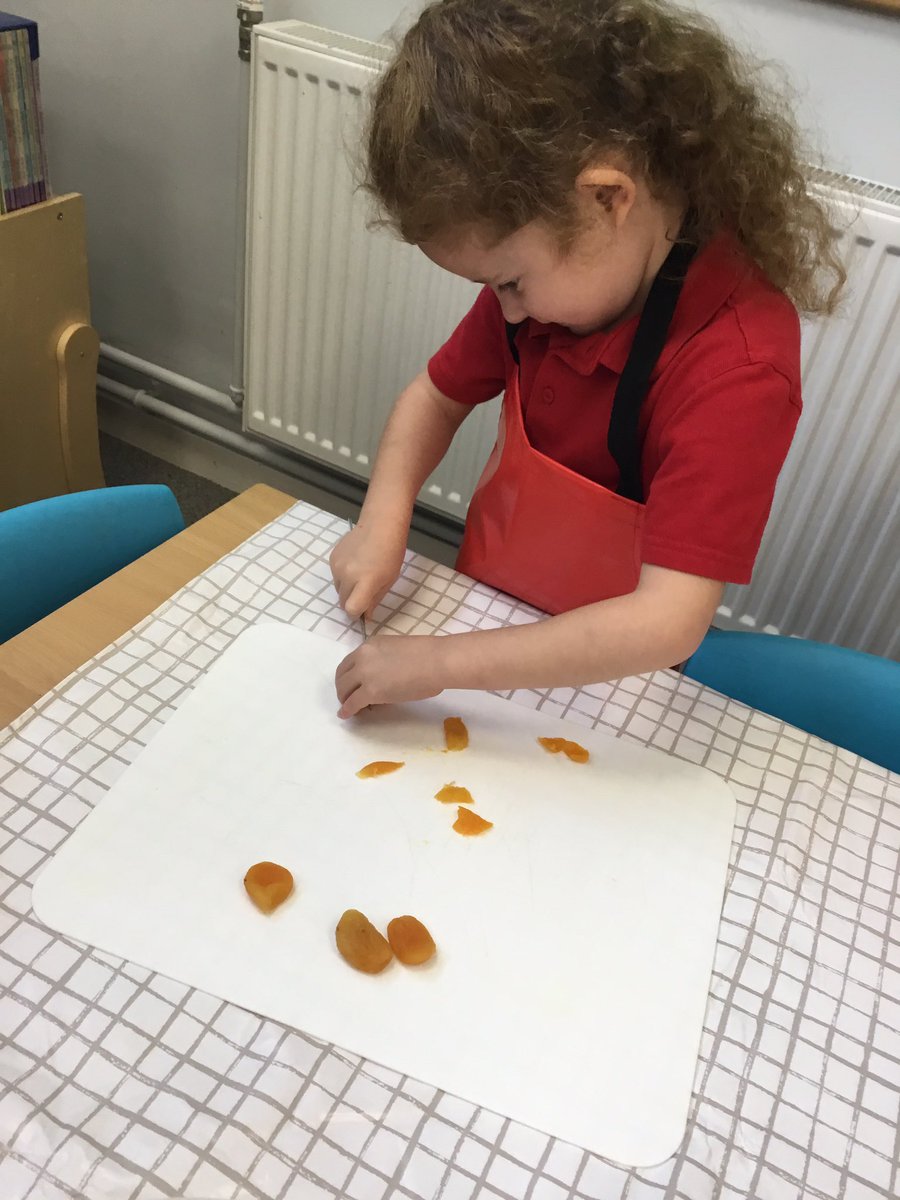
Step 6:
Implementing and Reviewing your Cooking Curriculum
Probably the most important part! There’s only so much planning you can do but realistically the most effective way to improve something is trial and error.
Get your team onboard and get your cooking and nutrition classes happening across school. Not everything will go perfectly from the start and so it’s important to make this clear with staff members. Explain that it’s a fresh attempt at something different and you want feedback from the sessions. What went well? Which things didn’t go so great? Do they have any ideas for improvements?
Welcoming the critics…
Building and introducing a new curriculum is hard and it does come down to people’s prior perceptions and experiences of that topic. In the past, teachers may have felt unsupported with your topic or maybe they’ve had a bad experience. It’s important to welcome the early critics and even more important to get them onboard.
Yes. It is your baby. You’ve created this curriculum and it’s heart-breaking when others don’t love it as much as you’d hoped. However, to really make it a success and to really make it work, you’ve got to hear the critics out. If everyone in school is onboard, as maybe they’ve all had some involvement making it, you’ll see your subject soar. You have to get people invested if you want them to put the effort in.
Make sure to give it a couple of months then sit staff down and have another chat. Take problems back to the drawing board, make improvements and launch it again the next term. Review regularly and you’ll find your school successfully cooking and learning about nutrition in no time!
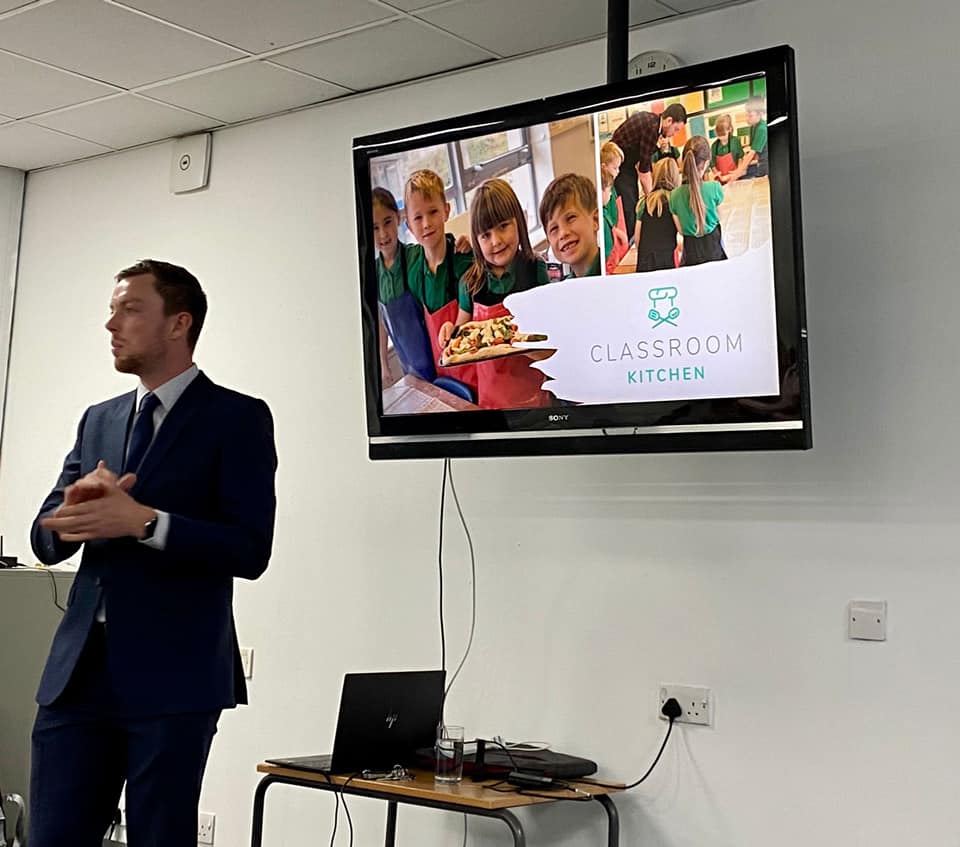
That’s that for our cooking and nutrition curriculum?
There’s so much more to developing your own school cooking and nutrition curriculum and as I said earlier, this is just building those foundations! Eventually you may want to introduce school-wide competitions, whole school assemblies, after-school clubs and cooking at home activities but start small and get the curriculum mapped out!
Cookery lessons can be an absolute success or an absolute flop in schools, there’s unfortunately not much in between. Keep it simple to start, get teachers onboard and look to improve it together. When your #educooking works in school, it’ll be the most talked about lesson of the week!
Good luck and get cooking!
The guy behind the rambling…
For anyone who doesn’t know me or hasn’t met me before, I’m James Deveney, owner of Classroom Kitchen and former Primary Teacher.
Contact:
Email: james@classroom-kitchen.co.uk
Twitter: /educooking_MrD
